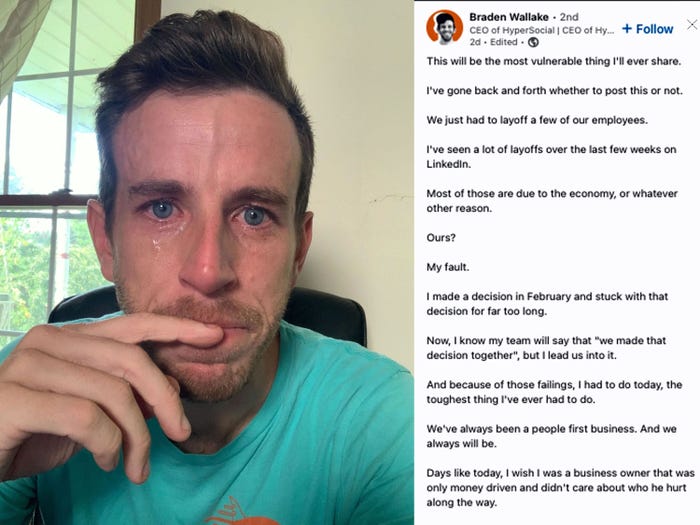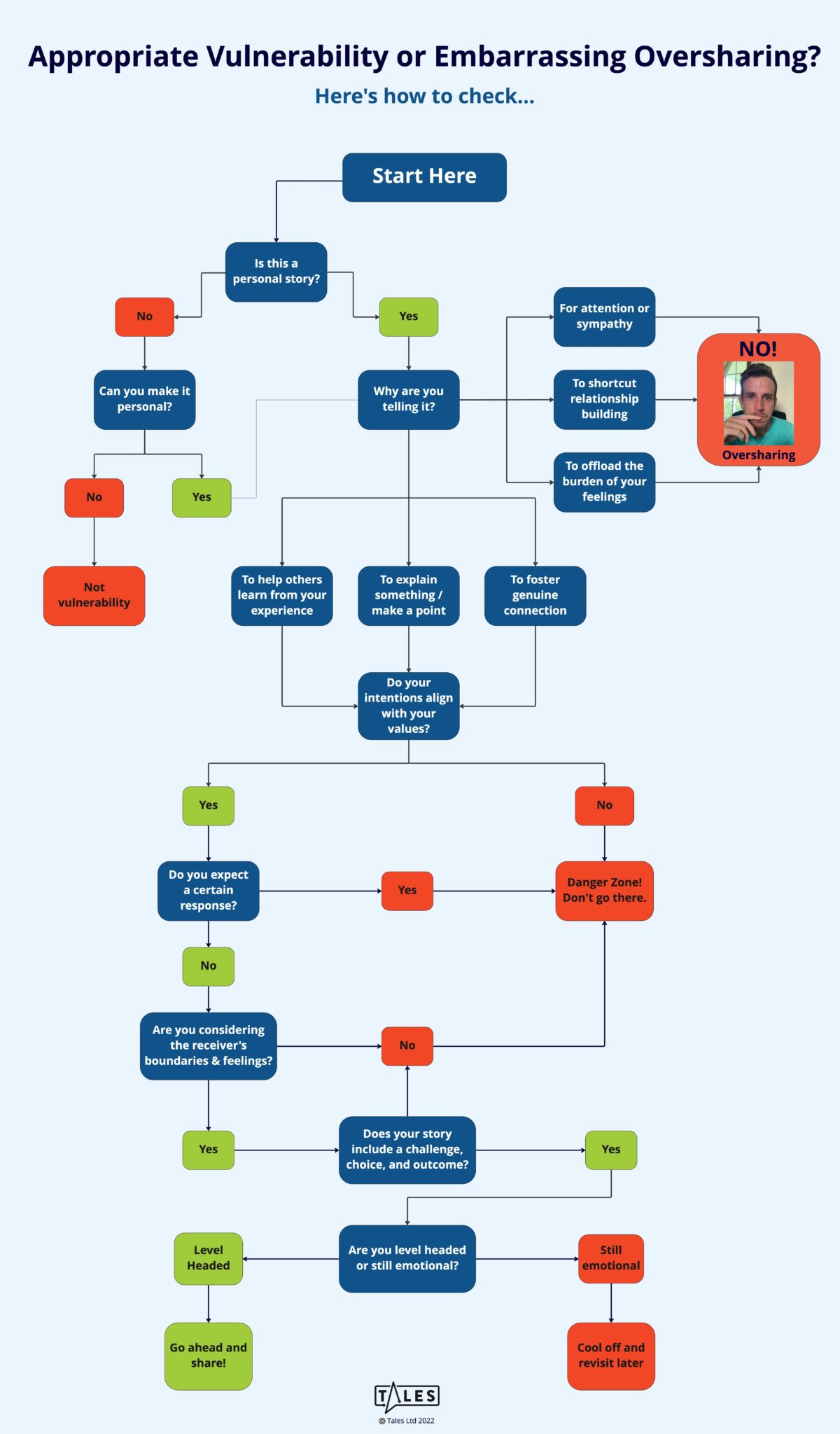ISSUE #4:
Vulnerability in
B2B Marketing?
Dec 22, 2022
Read time: 3.5 minutes
Do you remember the crying CEO on LinkedIn a few months ago, and the shitstorm that erupted after his “vulnerable” post?
If not, let me jog your memory:
In August, HyperSocial CEO Braden Wallake posted a crying selfie on LinkedIn, explaining how upset he was about laying off a bunch of his team.

The post started with “This will be the most vulnerable thing I’ll ever share…” followed by a sob story about how his poor decisions led to staff layoffs.
And although we’re always told vulnerability is a good thing, it didn’t go down well in this case.
(Quite the opposite)
People were so outraged that the post made international news, and Braden was briefly the most hated person on LinkedIn.
Because hitting the sweet spot of being vulnerable in a professional context without splurging can be tough.
And this guy definitely missed the mark. (You’ll see why in a minute).
But proper vulnerability is crucial to effective brand storytelling. So I have put together a short guide (and flowchart) to help you share your stories with confidence (and without becoming the next laughing stock.)
How to be vulnerable without splurging
The difference between vulnerability and oversharing mainly comes down to one thing – the intention behind it.
Genuine vulnerability is guided by the desire to help others, whereas oversharing is often motivated by a self-serving agenda.
In Braden’s case, the court of public opinion ruled him guilty of exploiting the misfortune of others for his own gain (attention, pity, going viral on social media).
But although your intention – or why you’re sharing something – is the most important consideration in gauging whether something is appropriate or not, you also need to consider what you’re sharing, and how you’re packaging the whole thing.
What stories to share
The only stories where you can truly be vulnerable are personal stories. As soon as a story is about someone else or a brand, you are by definition not being vulnerable.
So think about personal stories that contain a relevant lesson or experience that might be helpful for someone else. Something your audience can relate to.
Why to share your stories
Once you’re clear on the what – and it’s a relatable personal story – it’s time to look at the why. Why are you sharing it? To make sure your reasoning aligns with your brand values and goals, ask yourself…
- What outcome am I hoping for?
- Do my intentions align with my values?
- Is there an outcome, response, or lack of a response that will hurt my feelings?
- Do my expectations take into account the other person’s boundaries and preferences?
And use your answers to gauge whether your story is helpful and appropriate
How to package your stories
And if whatever you want to share passes that test, and you’re confident that it’s appropriate for you and your audience, then the next thing to consider is HOW to package it in a useful way. So that we avoid well-intentioned sharing where the delivery misses the mark landing you back in the awkward zone.
So for an effective delivery, ask yourself, “is there a clear challenge, choice, and outcome?”
Because those are the three key ingredients of a powerful story.
Where the hero (character), faces a challenge, navigates the plot by making a number of choices, to reach his ultimate outcome (transformation).
So by using this question as a vulnerability filter, you ensure that your story zeros in on the things that matter.
To make it easy for you, I’ve distilled these guiding questions into a flowchart for you:
(This is the filter I use when sharing vulnerable stories, and (so far) they’ve all been well received.)

That’s all for today – I hope you enjoyed it.
Also, this is the last email I’m sending out before Christmas. (How is it already this time of year?!) So in the meantime, I’m wishing you a lovely holiday.
Till next time!
P.S. If vulnerability in brand storytelling still has you stumped, I’ve just released a blog article covering the topic in more depth. You can check it out here if you like.
If you want to build brand awareness, authority, and trust, your best bet is to start by nailing your brand story.
Whenever you are ready, there are 2 ways we can help you do that:
- Join The Storydriven Marketing Academy: Our FREE course that teaches you how to consistently nail your messaging across all brand assets
- Enquire about our Brand Storytelling Workshop: We work with you 1:1 over four guided workshop sessions to craft your storydriven brand messaging & content strategy
Straight to Your Inbox
Subscribe to the Storydriven Marketing Playbook to get the goods straight to your inbox!
We hate spam as much as you do, and we’ll never, ever sell your data!


